

The IDEFA Journal

BREEDING FOR CWD RESISTANCE: How is this done with respect to proven production and marketability?
Sponsored by WDFO
MEDGENE LABS
Looks to Unveil Prescription Platform Vaccines for Use in White-tailed Deer in 2026
Sponsored by MDA
MELANISTIC DEER: Showing a Presence on Deer Farms
Sponsored by PDFA



2025-2026 IDEFA Board of Directors
President
Heath Alexander
Forgotten Mile Whitetails
6675 W 500 N
Pennville, IN 47369
Cell: (260) 341-7296
Email: thaeh80@gmail.com
Vice president
Lester Eicher
Springfield Whitetails
14905 Springfield Ct Rd
Grabill, IN 46741
Cell: (260) 341-3614
Email: springfieldwts@gmail.com
Secretary/Treasurer
Earl Hershberger
Clear Creek Whitetails
6960 W 200 N
Shipshewana, IN 46565
Cell: (260) 350-3506
Fax: (260) 768-4761
Email: earl@clearviewplasticsandglass.com

Director
Gary Bontrager
Pitside Whitetails
6445 S 700 W
Topeka, IN 46571
Phone: (260) 593-0943
Director
Derek Borkholder
Pine Creek Deer Farm
2877 Birch Rd
Bremen, IN 46506
Cell: (574) 248-0322
Email: tagouttech@gmail.com
Director
John Stoltzfus
5 Star Genetics
5835 N 1000 W
Shipshewana, IN 46565
Phone: (574) 596-2347
Email: jdwhitetails@gmails.com
Director
Dr. Darryl Ragland, DVM, Phd
625 Harrison St
West Lafayette, IN 47907
Home: (765) 494-3234
Cell: (765) 418-5673
Email: raglandd@purdue.edu
Director
Dave Schwartz
Shallow Pond Whitetails
3990 N 675 W
Shipshewana, IN 46565
Cell: (260) 336-1687
Email: shallowpondwts@gmail.com
Director
Jerry Schwartz Countryside Whitetails
10852 W 900 N
Bourbon, IN 46504
Cell: (574) 907-9457
Fax: (574) 546-0390
**Erica Bratton (574) 220-5652 ~ indianadeer@gmail.com
Hunting Preserve/Legislative
Chair: Dr. Ragland
I. Heath Alexander
II. Tom Kellems
Public Relations
Chair: Lester Eicher
I. Quincy Cunningam
Audit/Ethics & Bylaws
Chair: Robert Yoder
Co-Chair: Derek Borkholder
Budget Committee
Chair: Earl Hershberger
I. John Stoltzfus
II. Robert Yoder
Director
Cletus Bontrager
Twin Maple Deer Farm
8820 W 050 N
Shipshewana, IN 46565
Phone: (260) 768-4284
Director
Tom Kellems
Whitetail Ridge, LLC
6273 Saint Joe Cemetery Rd
Tell City, IN 47986
Cell: (812) 686-6055
Email: whitetailridge21@gmail.com
Director
Rober Yoder
Cedar Road Deer Farm
6664 Cedar Rd
Bremen, IN 46506
Phone: (574) 646-2504
Email: byoder@hardwoodinterior.com
IDAC
Chair: Dr. Ragland
I. Shelly Chavis
II. Shawn Shafer
Fundraisers/Summer Picnic
Chair: Derek Borkholder
Co-Chair: Lester Eicher
Co-Chair: Earl Hershberger
Co-Chair: Dave Scwhartz
Member Relations: Erica Bratton
Food: Jerry Schwartz
I. Tom Kellems
II. Gary Bontrager
III. Brian Bratton
IV. John Stoltzfus
V. Robert Yoder
VI. Heath Alexander
VII. Cletus Bontrager
VII. Heath Alexander
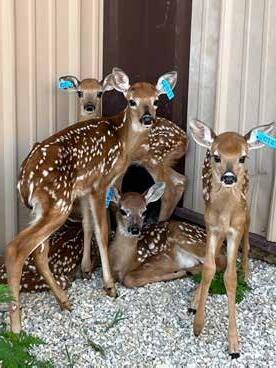

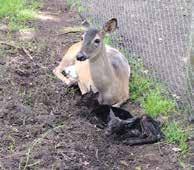
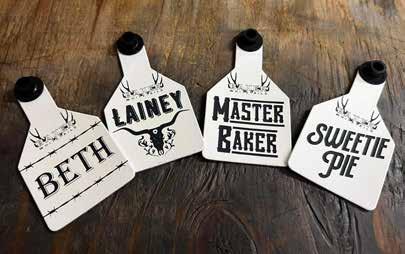



President’s Message
Winter 2025
Hello fellow members,
As winter approaches, I’m sure everyone is happy to have EHD season behind us. This was one of the worst years we have seen and affected many farms in our state.
Breeding season is here and we hope everyone has good luck with A.I. and live cover.
Our State is looking forward to having another great year. Our board continues to work to make deer farming better for everyone. Indiana is one of the leading states in our industry and we will continue to keep pushing forward.
Heath Alexander IDEFA Board President
ADMINISTRATIVE REPORT
Hello Members!
Hoping everyone’s breeding season was successful and that there is time to catch up on some relaxation and time spent with family and friends.
Membership renewals are due January 1, 2026. If you have not renewed your membership, now would be the time to do so. The membership form is located in each journal. Please make sure to take advantage of our necropsy reimbursement program for the in-state farmers. This is an excellent program to be part of. The form is located in each issue of the journal. Please make sure to use this form.
Wishing you a holiday season filled with joy, laughter, and moments that turn into cherished memories. We are beyond blessed to be able to spend this holiday season with our new granddaughter.



Erica Bratton Administrative Secretary
Cell: 574-220-5652
Fax: 952-955-6022
indianadeer@gmail.com





Both Josie Borkholder and James Slabaugh agree that while breeding for resistance is definitely one of their priorities, breeding for a proven pedigree is just as important. Having dedicated themselves to producing clean typical bucks at 4-acre Lone Pine Whitetails in Nappanee, Indiana and 15-acre Lone Pine North near Shipshewana “I don’t want to sacrifice pedigree for markers,” Borkholder said. “While we agree to breed for resistance, we want pedigree to also remain a prevalent factor.”
FEATURED
LONE PINE WHITETAILS – PRODUCING PROVEN AND MARKETABLE PEDIGREES
By: Gail Veley
At the forefront of their production is five-year-old breeding buck Black Rifle, whose typical mainframe, which measured 273” this year, seems to become more attractive and larger with each passing year. Many
top-quality sires such as Triple Digit, High Heat, Sunset Express, Storm Express and many topquality power does such as Ms. Patrick are in his pedigree. “Black Rifle is basically the look that everybody wants,” Borkholder, 33, shared. “He also has a good combination of both northern and southern genetics. His sons have also been good producers. We’re planning on breeding with his yearling sons this year. Out of all the others, they just really stand out with their tine length and mass.” Joe Johnson, a partner on Black Rifle and owner of Whiskey River Whitetails in northeast Ohio, feels the same way. Lone Pine production closely follows the well-known and infamous typical Patrick line, originally created by Josie’s father Eddie Ray Borkholder of Pine Creek Deer Farm. While Lone Pine remains

faithful to producing typical deer, they also grow a little of both. “Our customers know they can depend on our production to be consistent year after year,” Josie said.
The responsibility of seeing to the health and longevity of the herds falls mainly on Slabaugh, who handles the challenge by realizing the rewards often times outweigh the risks. After rising at 3:30 a.m. each morning and drinking one, make that four to five cups of coffee, he is ready to face a long but gratifying day. “Josie and I are very pleased with the production of Black Rifle,” he said. “We use him at both farm locations for A.I.” Deer raised at Lone Pine Whitetails, the original farm location, are primarily
Rifle @5
“At the forefront of their production is five-year-old breeding buck Black Rifle, whose typical mainframe, which measured 273” this year, seems to become more attractive and larger with each passing year.”

FARM STORY
breeding stock while deer raised at Lone Pine North are mainly sold as stockers. “We are very excited about our A.I. program this year,” Slabaugh, 60, explained. “Our breeding buck line-up included Black Rifle, Thermal Image, Voo Doo’s Magic, Horizon, Storm Express and Silver King.”
Future breeding plans now include using sexed semen from Black Rifle on does residing at Lone Pine North. And yet, there is one more thing Borkholder and Slabaugh are happy about. Not a single one of their deer contracted EHD this past summer. Slabaugh offers most of the credit to a garlic supplement called cinnaguard.


“We do spray insecticide, but I’d have to say I feel like this is working,” Slabaugh said. He is also very thankful for his wife Ruth who greatly assists with caring for the deer. As both Slabaugh and Borkholder look at what the future holds, they anxiously await their next fawn crop and for upcoming events such as Top 30 North and NADeFA.











Does the sound of antlers clashing make you cringe each fall?

PEACEMAKER
™




NOW ENHANCED WITH APPETITE STIMULANTS & PROBIOTICS!





















DESIGNED TO HELP INCREASE YOUR PEACE OF MIND... WHEN YOU NEED IT MOST!

Rut and reduced feed intakes can bring out the worst in bucks and irritable behavior can rear it’s ugly head!
PeaceMaker is scientifically formulated to provide optimal support levels of magnesium, Vitamin B1 and inositol to help maintain a normal and relaxed disposition in cervids
Now enhanced with appetite stimulants and probiotics for digestive health
Contains no herbals nor tryptophan, eliminating concerns of unwanted side effects
Use PeaceMaker™ to help “keep the peace” during pre-rut, rut, transportation and other key times during the year
Now available in a 30 lb resealable bag and 11.25 lb pail to help fit your operation’s needs

FAWN & DEER XTR™ PASTE R
ROBUST, FAST GI SUPPORT FOR FAWNS & OLDER DEER

Designed to quickly support normal GI health
Novel formula delivers powerful immune support
Can be used post tranquilization to help speed recovery












ENTERIC HEALTH FORMULA™
DIGESTIVE HEALTH & IMMUNE SUPPORT CERVIDS OF ALL AGES

Supports digestive health and a healthy immune system
Natural formula contains Encrypt®, egg proteins, enzymes, micro-encapsulated probiotics and a prebiotic
Top dress or mix in feed during fawning season, weather changes, times of stress and when top performance is desired






Love
By Tom Kellems
“Why do you raise deer?”
The answer is simple: love of the animal.
Whitetail deer and other cervids are fascinating creatures. From tiny fawns to majestic adults, they grow into incredible animals that inspire awe. But raising deer isn’t easy; they can survive incredible trauma, yet something as small as a fly bite can be fatal. Caring for them requires dedication, knowledge, and careful attention to their needs.
Deer live by their instincts. Their fight-or-flight response is intense; even the smallest change in their environment can send them running. That instinct makes thoughtful enclosure design crucial. Rounded corners and smooth alleyways let deer move gracefully, reducing the risk of injury. Wellplaced gates make moving animals

of the Animal
between pens or into a handling facility much easier and safer for everyone involved.
Handling deer happens a few times a year, but it’s far from a simple task. Vaccinations, disease testing, and artificial insemination are all part of the routine, and timing is everything. A handling facility makes these procedures safer and more efficient. Controlled environments, clean spaces, and thoughtful design reduce stress on the animals and allow caregivers to work carefully and calmly. For procedures like artificial insemination, keeping the does relaxed is critical to success.
Fawns benefit too. Climatecontrolled spaces protect them from cold temperatures and reduce the risk of illness, giving them a healthier start in life. Thoughtful care during these early stages can

make all the difference in the herd’s overall health and success.
Fawning season is one of the most important times on the farm. It is vital to keeping the herd growing strong. Bottle feeding, vaccination schedules, and caring for weak or sick fawns and their mothers can all be challenging but rewarding.
To help the fawns adjust to human interaction, farmers often dedicate time to bottle-feeding in order to help them become calm and comfortable around people. This helps prevent them from spooking during farm tours or daily chores. A simple trick, like playing a radio in their area, can help them get used to human voices and everyday sounds.
Consistency is key. A 12-week bottle-feeding schedule, starting with four feedings a day and

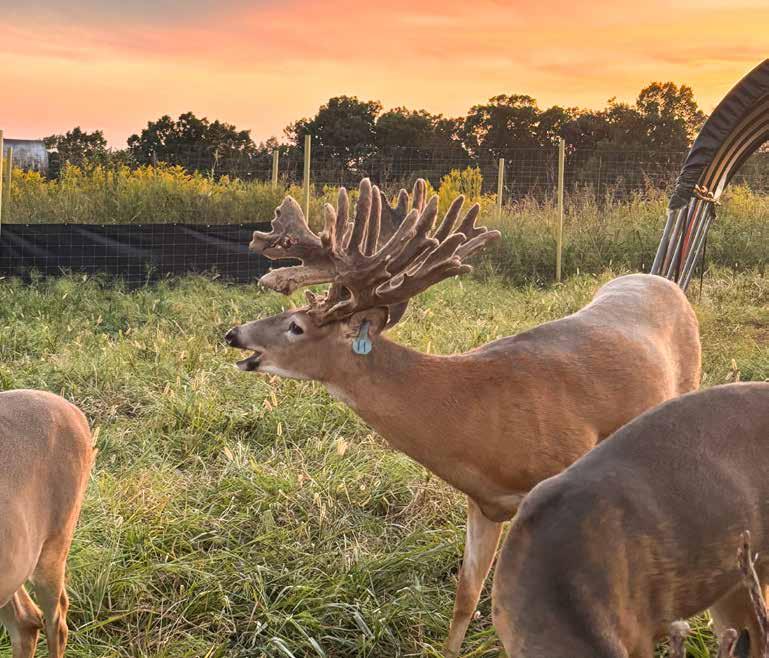
gradually reducing to one, helps wean fawns slowly and safely. Clean bedding, fresh food and water, and access to dirt are all essential for their well-being.
Illness prevention is one of the most important aspects of deer farming. While not every illness can be prevented, taking proactive steps greatly reduces risk. Regular vaccinations help prevent common diseases from spreading through the herd. Automatic waterers and eliminating standing water help reduce bacteria and parasites including the midge fly that carries EHD. Keeping food
sources under a roof ensures feed stays fresh and dry. Critter control prevents contamination from other animals. Most importantly, careful daily monitoring and early intervention can save lives before problems spread.
Being a deer farmer can be challenging and demanding, but it’s deeply rewarding. Every long night and early morning becomes worth it when you look out the window and see a strong, healthy herd thriving under your care. Raising deer is not just a job, it’s a calling, built on patience, respect, and above all, love of the animal.











Upcoming Whitetail and Cervid Events

Northern Top 30 - Jan 14-16, 2026 - Shipshewanna, IN
Illinois Deer Farmers Association Fundraiser - Feb 20-21, 2026 - Altamont IL
Alabama Deer Association Spring Auction - Feb 21, 2026 - Cullman, AL
Iowa Whitetail Deer Association Winter Banquet - Feb 21, 2026 - Timberghost Ranch Lodge
Kansas Deer & Elk Association Convention - Feb 28, 2026
United Deer Farmes of Michigan Annual Convention - March 6-7, 2026, Bath Township, Michigan
Southeast Trophy Deer Association Spring Fling - March 6-7, 2026 - Orlando, FL
Whitetails of Wisconsin Annual Banquet & Fundraiser - March 13-14, 2026 - Wisconsin Dells, WI
NADeFA Spring Open - March 20, 2026 - Sandusky, OH
KALA Summer Showcase - Aug 8, 2026
Whitetail Deer Farmers of Ohio Convention - Aug 13-14, 2026
Southern Top 30 - Aug 20-21, 2026 - Louisiana
TDA Annual Convention - Aug 28-29, 2026 - San Antonio, TX


Member Message
From Cedar Road Deer Farm
Winter 2025
Good morning, everyone

How is everyone and their families this morning? Hopefully well and ready for another gorgeous day of fall colors God has given us. My mind is kind of rolling back through this year. It is hard to believe there are only 2 months left this year. Bucks are shedded and sold to preserves. Breeding and AI is coming up, hopefully everyone is ready for this. There was a lot of EHD this year again in the wild and on the farms. Hopefully everyone gets the bucks moved and does in their breeding pens ready for the winter. We have Top 30 and NADeFA coming up before we know it.
May God bless us all in this business and at home will see you soon.
Robert-Gilbert-Kara Yoder
574-646-2504
2026 IDEFA Board of Directors Meeting Schedule
Meetings are open to all current members. Members, please contact one of your Board of Directors for call in codes and/or locations
Monday, January 19th, 2026 @ 6 PM – Face to Face @ Lester’s
Monday, March 9th, 2026 @ 7 PM – Phone Conference
Monday, May 11th, 2026 @ 6 PM – Face to Face @ Lester’s
Monday, June 15th, 2026 @ 6 PM – Face to Face @ Lester’s
Friday, August 7th, 2026 @ TBD – Face to Face @ Annual Meeting/Fundraiser & Picnic
Monday, August 24th, 2026 @ 6 PM – Face to Face @ Lester’s
Monday, October 12th, 2026 @ 6 PM – Phone Conference
Address: Lester Eicher 14659 Springfield Center Rd Grabill, IN 46741

Conference Call: 1-605-475-4700 Ext. #386360
















LIGHTER WEIGHT. MORE EFFECTIVE. MINIMAL TRAUMA.
IF YOU HAVEN’T TRIED PNEU-DART’S RDDS, YOU’RE MISSING MORE THAN YOUR TARGET
Did you know impact trauma can negatively influence medical treatment? We do. Which is why we’ve spent 55+ years perfecting the ideal remote delivery device. Shorter in length and lightest on the market, our disposable RDDs, with patented Slo-Inject® technology, provide ultimate accuracy while reducing the potential for problematic hematomas. Pneu-Dart. When you can’t afford to miss.®



Breeder Buck 2025 Showcase Magazine is here!
Just in time for semen sales, getting ready for breeding season!
We created this magazine in order for 2025 Breeder and Hunting Preserve advertisers to showcase their most recent photos of their bucks close to the last days of antler growth. We realize establishing a collective deadline for all states Fall magazines to publish on the same date to obtain last-minute photos would be impossible to achieve. With this magazine, advertisers have one more chance to showcase their bucks.

~ Thank you to all that participated!
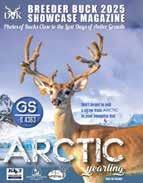



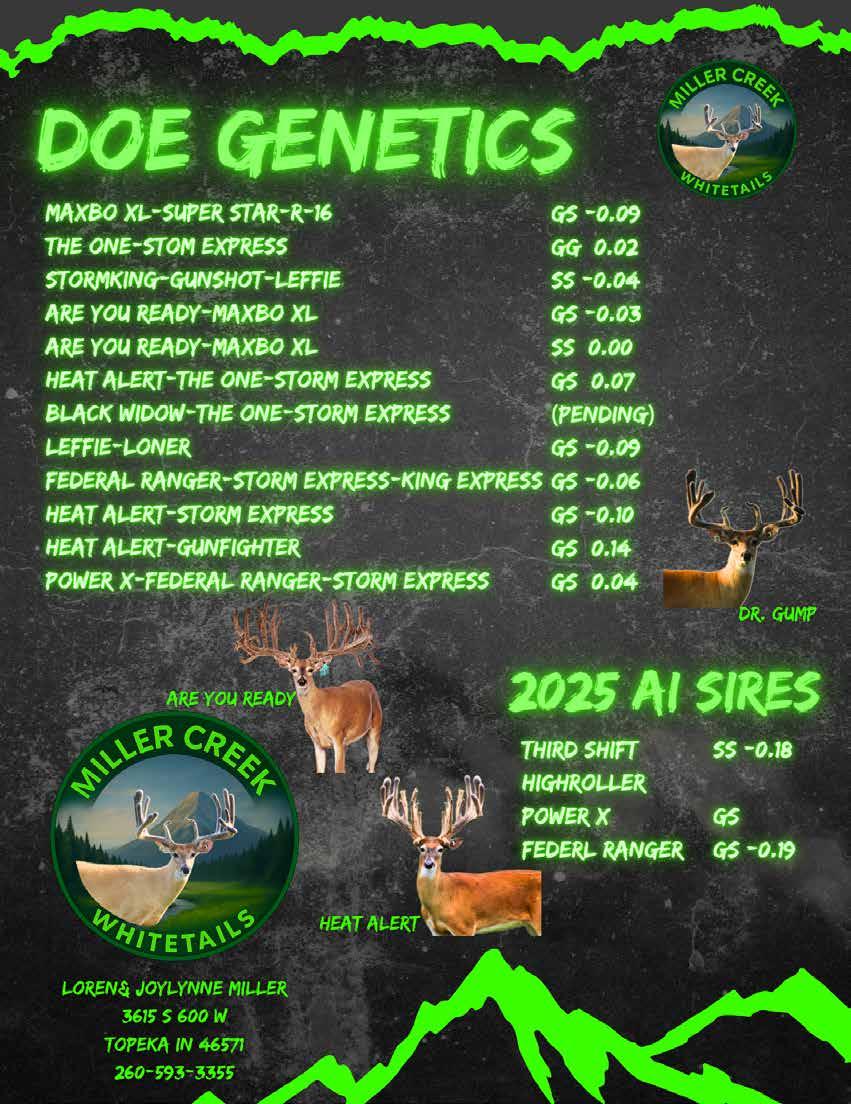



BREEDING FOR CWD RESISTANCE
HOW IS THIS DONE WITH RESPECT TO PROVEN PRODUCTION AND MARKETABILITY?
By: Gail Veley • Sponsored by The Whitetail Deer Farmers of Ohio
The fastest way to get to negative GEBV’s such as -.3 or -.2 or better, is to use deer that have SS markers and negative GEBV values, offers Ivan Hochstetler of Double H Whitetails, 25-acre deer farm in Mt. Eaton, Ohio. However, proven production and pedigree can also play a huge part in exactly how you arrive at having such a herd. Many deer farmers simply do not own (at this point) quality breeding bucks that are SS with negative GEBV breeding values. Yet it seems “every year a good buck comes out with good markers,” Hochstetler said. “For us, we buy SS semen with negative GEBV values from privately owned farms.”
The push to breed for SS markers and negative values and the realization that it was going to become necessary, began about five years ago, Hochstetler believes. Three years ago, things got more

serious. For Hochstetler and his herd of powerhouse GG does, he knew he needed a strategy. In breeding his proven and very valuable GG does to SS bucks with negative GEBV values, he is now producing GS deer and some SS negative breeding values. He has also not culled any deer but rather has sold some to hunting preserves. If all goes according to plan, in five years Double H Whitetails will see a huge impact as a result of their breeding decisions and have their very own SS bucks for breeding. “We’ve tested our offspring, and they are more and more resistant with each breeding cycle,” Hochstetler said.
Utilizing your current herd while working towards resistance breeding is a strategy that Joe and Crissy Johnson, owners of 7-acre Whiskey River Whitetails in East Sparta, Ohio are also abiding by. “We are doing a mix and not giving up proven production and pedigree,” Joe Johnson said. “Ninety-five percent of our deer are foundation deer to Ms. Patrick, a line that has proven itself for decades and decades.”
When Whiskey River Whitetails first got started three years ago, they acquired GG deer as starting stock for raising typical deer. Today, they use semen from SS bucks and have subsequently acquired GS offspring. “In a couple years we hoping to have phased out the GGs and have our very own SS big clean typical breeding bucks,” Johnson added.
While solid scientific proof points to the understandable justification for SS production, things can and often do change quickly in the deer industry. Therefore, Johnson, 47,

@ 3
believes his decision to preserve pedigree and proven production is a solid one, no matter what the latest trends may be or could become. “At this point I say ‘to each his own’ in finding what works for you and your farm,” he said. “Everyone has their own opinion on what is best for them.”
Going forward, Hochstetler feels that currently, “there’s not enough people selling markered does, but as that begins to happen it might be harder to afford to acquire them, especially for the new deer farmer,” he explained. However, while this may or may not prove to be a stumbling block “deer farmers are the solution to CWD and I feel having a reliable markered herd is what we’re all going to need, along with the indisputable proof from NADR that it’s real.”
Daybreak



FUNNIEST DEER NAMES
SHARED STORIES FROM FELLOW DEER FARMERS
By: Gail Veley • Sponsored by the Southeast Trophy Deer Association
Deer, with their memorable antics, characteristics and often times unusual behavior, earn a place in a deer farmer’s heart and perhaps a funny name along with it. The following is a list compiled by deer farmers willing to share their story.
Upper Midwest Trophy Whitetails. Hazel, South Dakota. “Hammer Time” – a buck named after the local game warden and “Ever Ready,” a son of Excel.
Haas Fallow Deer Farm. Warrenton, Missouri. “Couch Tater” - named so after being abandoned by his mother, being bottle fed and spending a lot of time on the couch watching television, and “Dart” after being delivered and saved by owner Jeff Haas, who still greets him with a bark.
Awesome Whitetails. Middlebury Center, Pennsylvania. “Mallory”given her name after she became a family pet and responded with twitching ears to being called “Mal Mal.”
Baker Whitetails. Junction, Illinois. “Master Baker” – a buck named by Chase Baker after Kyle Neal of Neal’s Whitetail Ranch in Ewing, Illinois, dared him to do it.
Shallow Pond Whitetails. Shipshewana, Indiana. “Humpy” - named by Dave Schwartz for the buck’s protruding shoulder blades.
Double H Whitetails, Dundee, Ohio. “Bambi Boo Boo” got his name when as a young buck fawn, he made a “boo boo” inside the house.
MVP Whitetails. Kaufman, Texas. “Ping Pong” was named after his flighty disposition and propensity to run into and bounce off of fences. He was later renamed “Ricochet.”
Sterrett Knob Whitetails, Fredericksburg, Ohio. “Reject” got his name after he was left for dead by his mother. After turning into a big and sturdy buck, he let Levi Miller’s kids ride him like a horse. After he was later sold to Eric Klick, he continued to live a good life and died of old age.
2 Base Down Farm. Morriston, Florida. “Minnie” is one of several girlfriends of breeding buck “Mickey.” Minnie was born weighing two pounds six ounces but is alive and well today. “Nala,” named after the young lioness from The Lion
King, has a very noticeable mane. “Houdini,” earned her name after escaping from a fawn proof pen.
Other deer names at 2 Base Down might be self-explanatory such as “Ms. Fancy Pants” or an abandoned three-pound fawn named “Mercy Me.” When a young buck fawn broke his leg, they named him LBB for “Little Boy Broken,” who went on to be a prized breeding buck, while teaching a valuable lesson. Never give up on a fawn. “When we raise and name deer, we have fun doing it,” Leffler said. “With our breeding buck Mickey, we figured if a mouse named Mickey could put Florida on the map, then our very own “Mickey” could do that for our farm.”







MEDGENE LABS
Looks to Unveil Prescription Platform Vaccines for Use in White-tailed Deer in 2026
By: Gail Veley • Sponsored by TheMissouri Deer Association
Deer farmers can feel optimistic about vaccine advancement by Medgene Labs in Brookings, South Dakota. If all goes according to plan, the prescription platform for whitetailed deer will be available in 2026. This will allow Medgene to offer more than an EHD vaccine to deer farmers, specifically an option to vaccinate against some strains of bluetongue. Bluetongue, an often fatal virus closely associated with EHD, is caused by the same vector, the Culicoides midge fly. Symptoms include fever, swelling of the head, neck and tongue, lameness, a loss of the fear of humans and the desire to be near water. Although Medgene Labs has a vaccine for EHD, they felt the need to expand to a prescription platform in whitetails because a specific bluetongue vaccine was just as necessary, said Medgene Labs Immunological Services (I.S.) Prime Director Ashley Petersen. “While bluetongue is very similar to EHD, having a vaccine specific to both is another part of a toolbox in overseeing the health and well-being of your deer,” she explained.
In order to test the safety of the prescription platform technology, a
vaccine Safety Study was conducted after four farms, one located in South Dakota, one in Oklahoma, one in Missouri and one in Ohio, agreed to allow their herds to participate. The study evaluated how safe the vaccine appeared for the target species (white-tailed deer) and recorded all reaction events that may have happened after an injection such as limping, soreness or not eating. Medgene’s currently available EHDV2&6 vaccine is manufactured differently than the methods used in the prescription platform system. Though the immune response is robust, “it didn’t matter if it was administered IM or SQ, the deer would be lame afterwards,” said Amy Nold of Nold Farms, LLC in Urich, Missouri. “I would say this new vaccine formulation shows great promise. Lameness is much less significant. I think it allows for more confidence while not inhibiting production.”
In addition, Nold felt there wasn’t a difference between how the does or bucks responded to the vaccine. Vaccines were administered starting December 16th, 2024, and followed up with a booster on January 4th, 2025. Every farm that participated
reported their observations back to Medgene Labs, who upon receiving the results, prepared and submitted a report to The Center for Veterinary Biologics, a division of the USDA located in Ames, Iowa. The center, which works to assure that safe and potentially effective veterinary biologics are available for the ultimate treatment of animal diseases, will more than likely need three to four months to review the report, Petersen said. Should the vaccine platform for use in whitetailed deer be given the greenlight, it will join others that subsist under Medgene Lab’s Prescription Platform License and will contain a “label claim” listing potential side effects. “I’m willing to use this vaccine on all of my deer,” said Nold, whose herd numbers exceed 200 head. “I say the risk is worth the reward in seeing our deer grow and in learning about and caring for one of God’s most wonderful creatures. Anytime you have an opportunity to participate in research, it’s always a pleasure and an honor.”


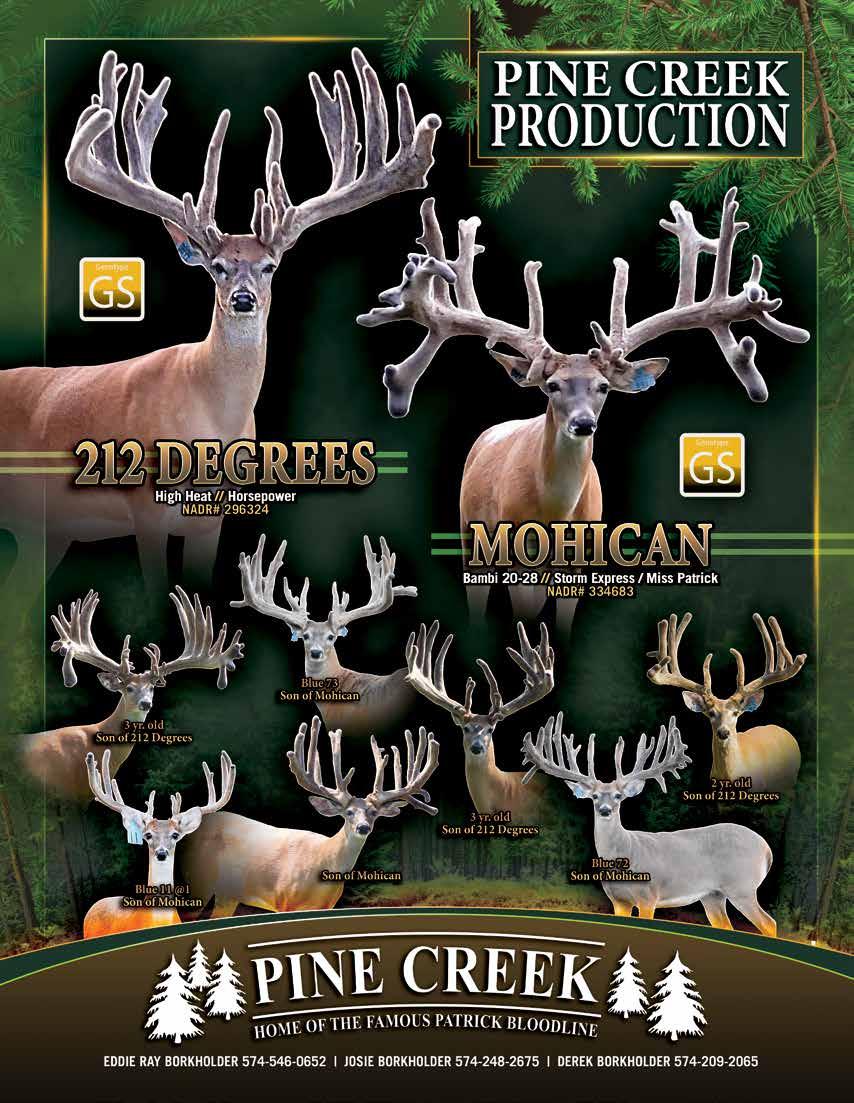
MELANISTIC DEER
SHOWING A PRESENCE ON DEER FARMS
By: Gail Veley • Sponsored by the Pennsylvania Deer Farmers Association
It was a beautiful cool May morning this past spring, when Adam Lindsey casually walked past the pen of a doe who had just given birth at his farm Size Matters Whitetail, in Bronson, Michigan. He glanced over and immediately stopped to refocus on the new fawns, still wet, pure black and glistening, curled up on the ground. Holding his breath, he couldn’t stop staring. Literally blown away that their breeding efforts had come to fruition, he then ran to his wife Ashley to announce the great news. They now had two melanistic fawns, one buck and one doe.
“We were proactively trying and that was our hope and dream to have melanistic fawns,” Lindsey said. “But we’d never had one born before then.” Melanistic deer, first discovered and recorded in 1929, are the rarest known form of whitetail deer. Their morphologically dark bodies contain a high deposition of the dark pigment known as melanin, caused by specialized cells called melanocytes responsible for producing the darker pigmentation. A rare genetic recessive gene mutation can produce a melanistic deer, with a believed average of
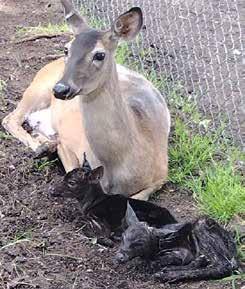
a one in every 10,000 chance. In addition to melanistic whitetails, melanistic fallow deer and mule deer have been spotted in the wild. And unlike albino deer, whose life spans tend to be shorter, melanism is not believed to hinder a deer’s lifespan, nor do melanistic deer appear to be more susceptible to typical whitetail ailments.
Melanistic whitetail deer have been found in states such as Mississippi, Michigan, Virginia, Texas, South Carolina and Pennsylvania. In a quest to add to their uniqueness, Mick
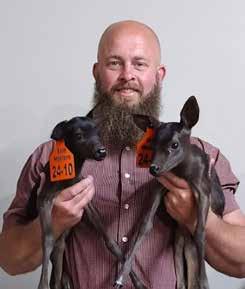
and Mike Goodman of Goodman’s Whitetail Haven in New Stanton, Pennsylvania, are creating their own melanistic piebald deer herd. “I always loved piebald,” Mick said. “About 10 to 12 years I really started pushing them and wanted to breed the melanistic deer into them. After a lot of effort, we now have melanistic piebalds.”
The Goodman’s and Lindsey credit Bob Rosebrock of Rosebrock Whitetails in Lott, Texas for allowing them to follow their dream.
Goodman subsequently produced his breeding buck “Black Velvet,”
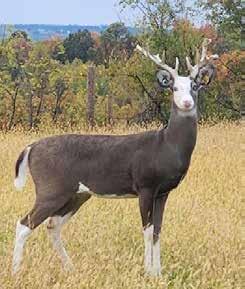
their very first melanistic piebald. While melanistic deer can be every bit as hardy and substantial in terms of frame as their brown and white pelage counterparts, piebalds can be smaller bodied. Goodman’s future breeding plans include breeding “Outstanding,” one of the top piebalds in the country right now, whose 317” and 7 x 7 typical main frame includes a little extra, in order to continue producing piebalds who are every bit as large and hearty as brown whitetails.
“Looking ahead, I feel the market should be really good for melanistic deer,” Lindsey said. “I have had a lot of interest in people wanting to buy those babies. Both are “SS” with negative GEBV values. That will be a plus side for the industry. But you can’t necessarily get more melanistic deer just from breeding them to those that are melanistic. As we predictably breed, we can increase those chances over time. At our farm, the goal in to breed for 75 percent brown deer and 25 percent melanistic.”
Goodman feels that while the market for melanistic deer has yet to be officially established, it looks very promising. “Never give up on your dreams,” he said. “Although it may be more difficult to produce melanistic deer, we went after what we wanted and are very happy with the results. We look forward to more success.”



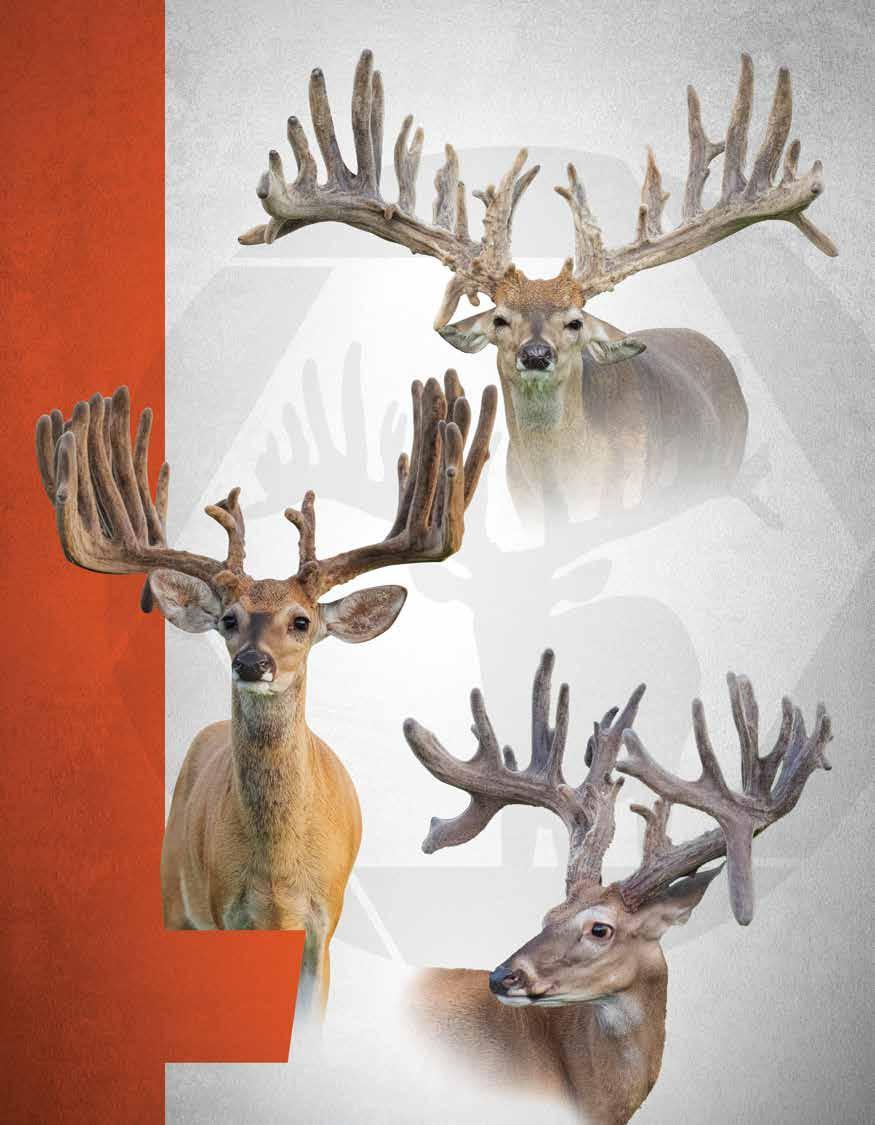


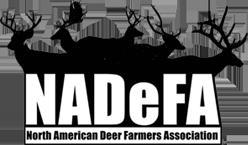






NADeFA Convention Photos at the 2026 Convention!
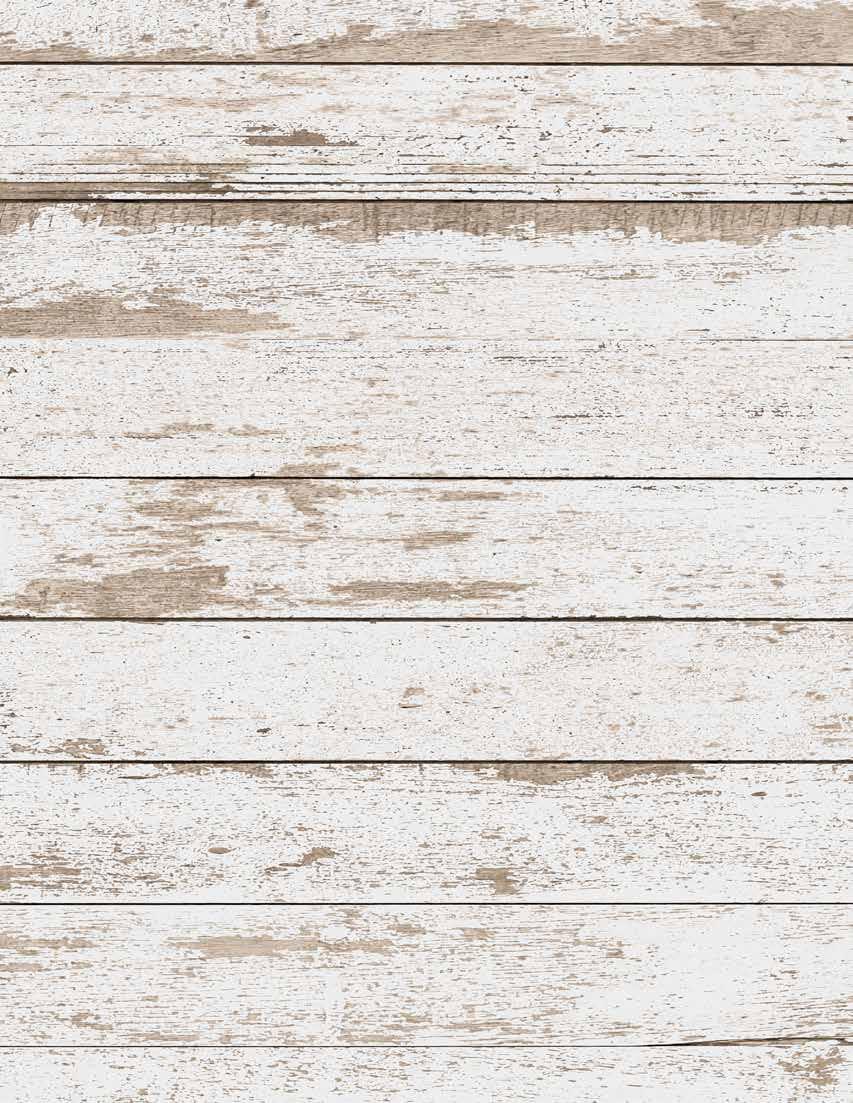



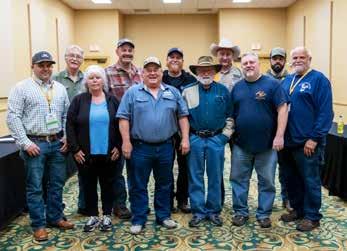


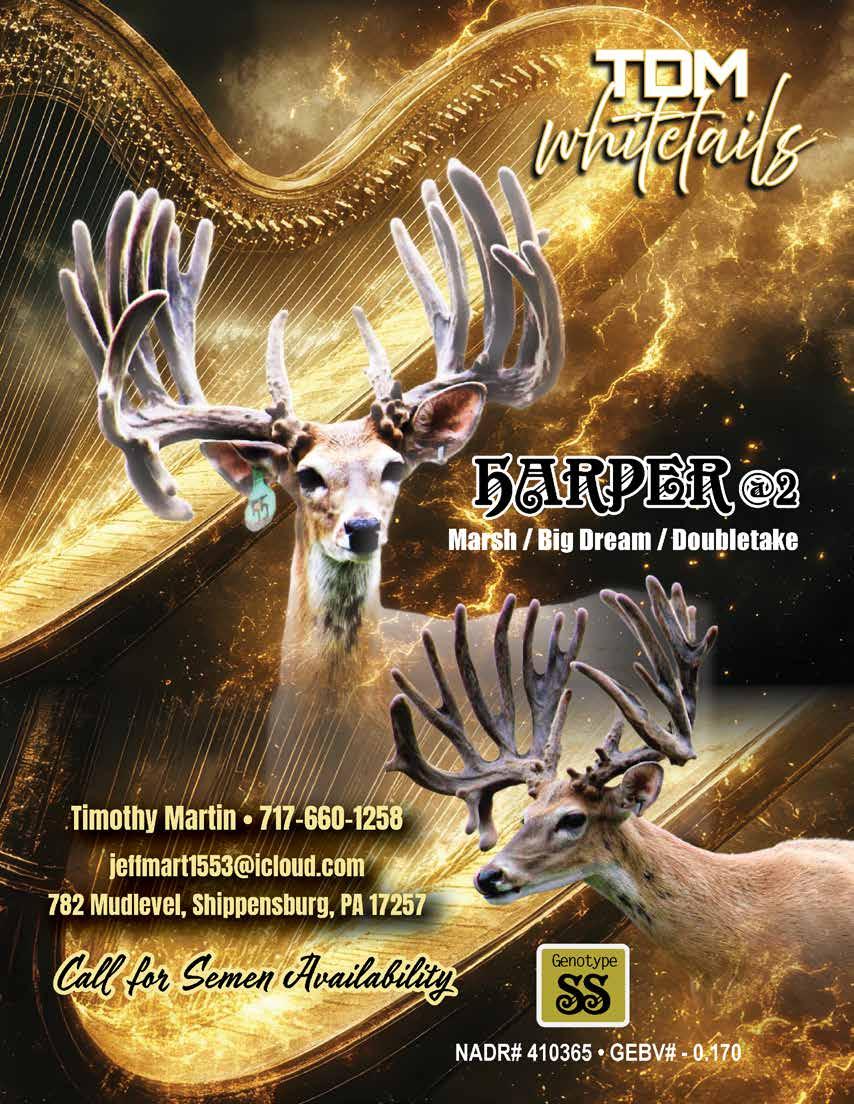






If you would like your farm or business featured on our business card pages, email digital pdf file or scanned image (must be readable resolution) of your business card to the email address below.
This gives IDEFA members a way to reach out to one another for services and to buy or sell deer! There will be limited pages for these card spreads, first come first serve. The overflow would be placed in the next issue and cards will be rotated each quarter.
Email to:
Erica Bratton indianadeer@gmail.com

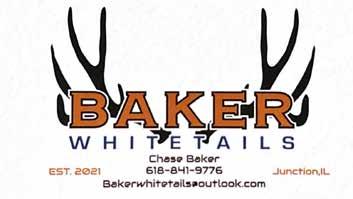
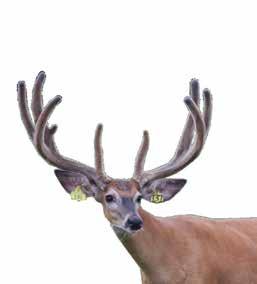





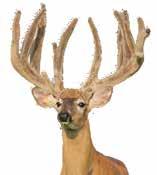







A sedation kit for every species or procedure.

MK2™ KIT - PROPRIETARY FORMULA
The most widely used MK™ Kit on the market today. Contains a higher concentration of medetomidine and ketamine than the original MK™ formulation which provides the ability to use less medication and a smaller dart resulting in improved accuracy when capturing.

MKB™ KIT - PROPRIETARY



MKB2™ KIT - PROPRIETARY FORMULA
Contains higher concentrations of medetomidine, ketamine and butorphanol than the MKB™ Kit, which provides the ability to use less medication and a smaller dart, resulting in improved accuracy when capturing. It’s recommended for super exotics and large cervids that may be more difficult to sedate.

Developed by a zoo veterinarian to allow wildlife handlers to induce a reversible sedation, the MKB™ kit offers smooth induction with faster reversal times due to the lower concentration of ketamine. It’s recommended for sedation scenarios where the procedure being performed doesn’t require the animal to be on the ground for more than 15-20 minutes. Our MKBM™ Kit builds on our MKB™ combinations by adding midazolam to provide superior muscle relaxation and more reliable sedation. It’s recommended for the chemical immobilization of numerous large exotic hoofstock species including bongo, kudu, gazelle, eland as well as other African hoofstock and certain domestic wildlife species.

LEARN MORE
Disclaimer: The information contained in this advertisement is general in nature and is intended for use as an informational aid. It does not cover all possible uses, actions, precautions, side effects, or interactions of the medications shown, nor is the information intended as medical advice or for making an evaluation as to the risks and benefits of using a particular medication. You should consult with your veterinarian about diagnosis and treatment of any health problems. Information and statements have not been evaluated by the Food and Drug Administration (FDA), nor has the FDA approved the medications to diagnose, cure or prevent disease. Medications compounded by Mixlab are prepared at the direction of a veterinarian. Mixlab compounded veterinary preparations are not intended for use in food and food-producing animals. Mixlab does not recommend, endorse or make any representation about the efficacy, appropriateness or suitability of any specific dosing, products, procedures, treatments, services, opinions, veterinary care providers, or other information that may be contained in this advertisement. Mixlab is not responsible nor liable for any advice, course of treatment, diagnosis or any other information, services or products that you obtain through this advertisement.








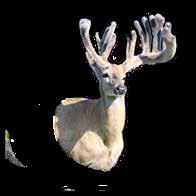
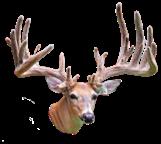





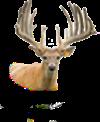











Blackjack
Bambi Express
Maxbo Hardcore Triple Crown
Sovereign Mack
The One
Back In Black Express
Major League
St Patrick
Express Shadow
Storm Express
Gunslinger
Anchor Man
Day Break
Maxbo Danger


FREE business card ads for members of Indiana Deer and Elk Farmers’ Association



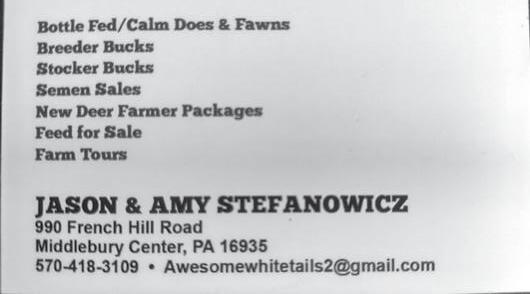

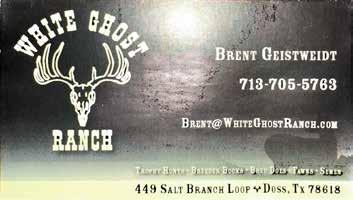
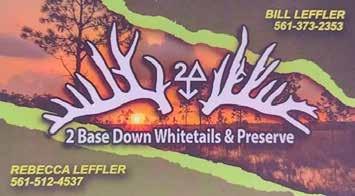


























Ingredients
• 2 tablespoons canola oil
• 2 pounds venison stew meat
• 3 large onions, coarsely chopped
• 2 garlic cloves, crushed
• 1 tablespoon Worcestershire sauce
• 1 bay leaf
• 1 teaspoon dried oregano
• 1 tablespoon salt
• 1 teaspoon pepper
• 3 cups water
• 7 potatoes, peeled and quartered
• 1 pound carrots, cut into 1-inch pieces
• 1/4 cup all-purpose flour
• 1/4 cup cold water
• Browning sauce (optiona)l
Instructions
IDEFA Recipe
Venison stew



1. In a Dutch oven, heat oil over medium heat. Brown meat on all sides. Remove from pan.
2. Add onions to the same pan; cook and stir until crisp-tender, 5-7 minutes. Add garlic; cook and stir 1 minute longer. Add water, stirring to loosen browned bits from pan.
3. Stir in Worcestershire sauce, bay leaf, oregano, salt and pepper. Return meat to pan; bring to a boil. Reduce heat; cover and simmer until meat is tender, 1-1/2 to 2 hours.
4. Add potatoes and carrots. Continue to cook until vegetables are tender, 30-45 minutes. Remove and discard bay leaf.
5. In a small bowl, mix flour and cold water until smooth; stir into Dutch oven. Bring to a boil; cook and stir until thickened, 1-2 minutes. If desired, stir in browning sauce.
RECIPE VARIATIONS
Add or swap the vegetables: You can supplement the potatoes and carrots or substitute with your choice of vegetables. Frozen peas, celery and sweet potatoes are all sturdy enough to hold up during the long cook time while adding delicious flavor to your stew.
Stir in tomatoes: Tomato paste or drained canned tomatoes provide color, flavor and a subtle tang that works well with this rich dish.
Replace the water with beef broth or stock: For even richer, deeper flavor, replace part or all of the water called for with canned beef broth (if you have your own homemade beef broth on hand, even better).



Date: _____________ Membership year is January 1 to December 31
Name:__________________________________________________________________ (first) (last) (Middle)
Spouse:_________________________________________________________________ (first) (last) (Middle)
Farm or Ranch Name:______________________
Address:________________________________________________________________
City:__________________________ State:______ Zip:___________County__________
Do you currently own Cervidae in the state of Indiana?
Membership Categories __________
$ 75 Full Membership plus Spouse with Voting Rights __________ $ 50 Full Membership with Voting Rights __________ $ 50 Supporting Membership without Voting Rights
CREDIT CARD INFORMATION FORM
CREDIT CARD NUMBER:
CARDHOLDER NAME (as shown on card):
EXPIRATION DATE (mm/yy): CVC: ZIP
ONE TIME CHARGE: RECURRING ANNUAL CHARGE:
I authorize IDEFA to charge my credit card above for agreed upon Association Membership purchase(s). I understand that if I choose recurring annual charge my information will be saved to file for future transactions on my account. I may cancel this authorization at any time by contacting IDEFA. Recurring Membership charges will take place on or around January 1st of each year. I further understand it is my responsibility to report any changes in my contact information so that there is no interruption in communications.
AUTHORIZED SIGNATURE:
Return Form and payment to:
Bratton 1050 N 600 W LaGrange, IN 46761
Email: IndianaDeer@gmail.com






















NECROPSY SUBMISSION FORM
Indiana Animal Disease Diagnostic Laboratories
ADDL at Purdue University HEEKE ADDL - SIPAC 406 S University St 11367 E Purdue Farm Road West Lafayette, IN 47907-2065 Dubois, IN 47527-9666 P: 765-494-7440 F: 765-494-9181 P: 812-678-3401 F: 812-678-3412
VETERINARIAN:
Name
Indiana License #
Dr. Jeff Pyle 24004598
Clinic Address
City, State, ZIP
Phone Fax
Results: Fax Email
Manchester Veterinary Clinic 11798 North State Road 13 North Manchester, IN 46962 (260) 982-6673 (260) 982-8200 jbpyle@fcremc.coop
Additional Results by:
Email Fax
springfieldwts@gmail.com (260)768-9182
OWNER:
Name Address
City, State, ZIP

ANIMAL:
Site/Farm/Unit
Address
City, State, ZIP
Site/Farm/Unit Phone
Premise ID
PREMISE ID
BARCODE
SIGNATURE FOR REGULATORY SUBMISSION:
Veterinarian
Bill to Veterinarian Bill to Owner (Phone) Purdue Fund Bill to Third Party (Name/Phone) RIO/SIO
HISTORY: Clinical Problem: Respiratory Enteric Neurologic Reproductive Other
Age _____ day wk mo yr # On Site _____ # In Affected Group _____ # Sick _____ # Dead _____ Breed ____________
Whitetail Deer
Animal ID Weight ____________ Date & Time of Death _______________________________
Cause of Death: Natural / Euthanasia - If euthanized, method used: ______________________
Were barbiturates used? Yes / No - If chemical euthanasia, chemical(s) used: ________________
I certify that the animal has not been exposed to a level of chlorinated pesticides or PCBs in excess of regulatory limits for animals. As the responsible party, I certify that the above information is accurate and true.
Signature and Date: ___________________________________________
***Testing is approved for Mycoplasma spp. PCR on any respiratory case. If identified, lung tissue is to be forwarded to Newport Labs with the IDEFA Newport submission form on file. ***CWD samples will be collected and tested on all cervidae greater than one (1) year of age.*** Please perform culture and sensitivity on tissue samples submitted or tissues that are visibly diseased at time of necropsy. Also perform parasitology testing.
ATTENTION IDEFA MEMBER: Once results are released to above destinations you will be entitled to your reimbursement from IDEFA
Species:
Aquatic
Avian
Bovine
Camelid
Canine
Caprine
Cervid
Equine
Feline
Ovine
Porcine
Other
Sex:
Male
Female
Male - Neutered
Female - Spayed
Cremation:
Pets Remembered (ADDL-WL Only)
Pet Rest
Individual Cremation
Group Cremation
Ashes Returned To:
ADDL/HEEKE
Owner
Vet Clinic
Differential Diagnosis or Disease(s) Suspected _________________________________________________________________________________________
Legal/Insurance
Suspect (County) _______________________________________
Standard Necropsy Abortion Protocol
animal or any agent acting with the express authorityof the owner agrees that the specimens have been submitted to ADDL and will be handled by ADDL in accordance with ADDL testing procedures, policies, and fees. This handling will include all specified testing and safe disposal of the animal’s remains. Specimens and
federal animal health officials, or 3) when a Foreign Animal Disease is suspected. This form only lists frequently requested tests. For the complete list of tests, consult the ADDL Fee Schedule.
Client of Cremation Service? Yes
No



Mult-State Magazine Advertising Pricing Guide

• Alabama Deer Association
• Illinois Deer Farmers
• Indiana Deer And Elk Farmers Association
• Iowa Whitetail Deer Association
• Kansas Elk and Deer Association
• Kentucky Alternative Livestock Association
• Minnesota Deer Association
• Missouri Deer Association
• New York Deer and Elk Farmers Association
• North Dakota Deer Ranchers
• Pennsylvania Deer Farmers Association
• South Dakota Deer & Elk Breeders
• Southeast Trophy Deer Association
Buckaneer Package:
44 ISSUES FOR 1 YR
Reaching out to over 2500 members
(11 Publications x 4 quarters)
17 State Associations - Approx. 2500 readers
$189 / Issue ($8316. / Yr) ~ Full Page
$107 / Issue ($4708. / Yr.) ~ Half Page
(55-59% Discount off single ad placement)
Yearling Package:
4 ISSUES FOR 1 YR.
(1 Publication x 4 quarters)
$252/ Issue ($1008. / Yr) ~ Full Page

*

$137 / Issue ($548. / Yr.) ~ Half Page (40-48% Discount off single ad placement)

Single Issue In Any Of Our Eleven State Publications: Full Page: $420.00 1/2 Page: $263.00

• Texas Deer Association
• United Deer Farmers of Michigan
• West Virginia Deer Farmers Association
• Whitetail Deer Farmers of Ohio
• Whitetails of Louisiana
• Whitetails of Oklahoma
Doe-Re-Mi Package:
16 ISSUES FOR 1 YR.
(4 Publications of your choice x 4 quarters)
$220 / Issue ($3520. / Yr) ~ Full Page
$121 / Issue ($1936. / Yr.) ~ Half Page (48-54% Discount off single ad placement)
*


Exotic
Package Add On *
TEXAS DEER ASSOCIATION MAGAZINES
4 ISSUES FOR 1 YR. (Can be added to Buckaneer or Doe-Re-Mi package) Reaching out to over 800 TDA members
(3 Tracks Publications & 1 Auction Catalog)
$428 / Issue ($1712. / Yr) ~ Full Page
$267/ Issue ($1068. / Yr.) ~ Half Page
(55-59% Discount off single ad placement)
Single Issue In TDA Publications:
Two Page: $1500. One Page: $950 1/2 Page: $650



ADVERTISERS INDEX -






